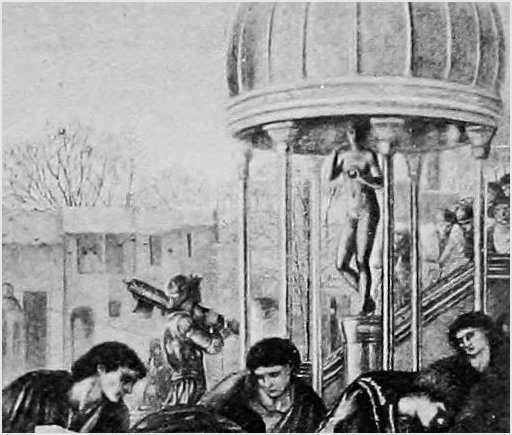Aphrodite Above It All
Tuesday, January 30th, 2018 -- by Bacchus
While researching images on commission, something went by in Google Search that caught my eye. In The Lives And Legends Of The Great Hermits And Fathers Of The Church (1902) there’s a curiously-modest painting by Sir Edward Burne-Jones depicting the 4th-century martyrdom of St. Dorothea after page 88. It’s good that the painting is modest, even shamefaced; a bunch of darkly-seen people bent over a mostly-unseen torture victim, which is all to the good given that the martyrdom was by all accounts a pointless, stupid, squalid, and bloody affair, as all such were. What caught my eye was an architectural detail. There’s this cupola, see, for keeping the rain off what I take to be a statue of Aphrodite (if that’s an apple clutched to her breast) who is looking down over all the grim festivities:

My point? No point. Just that art, and art history, is sometimes deeply weird.
Update: I woke up seized of the need to go deeper. So I looked up the artwork beneath this photographic plate. Reader, this did not help. There were two versions of the watercolor made, according to Sotheby’s, and it’s not clear whether the one I’m about to show you is the same one photographed above or whether that one is the one destroyed by German bombing in 1942. Either way, why is naked Aphrodite rendered in blue? (Or it could be purple, I have a red/green color vision deficiency, so purple is a thing I never identify when it exists.) Yeah, “deeply weird” got weirder:
(Detail is linked to uncropped artwork.)
Similar Sex Blogging:










